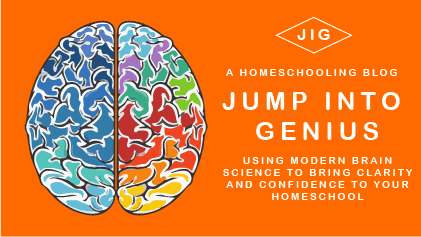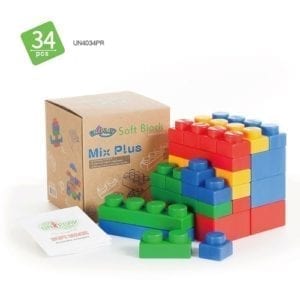I want my kids to know grammar. But I can’t abide with the dull, boring, life-sucking type of instruction that many grammar programs embrace. That’s why I decided to try Fix-It! Grammar by IEW (Institute for Excellence in Writing).
Disclosure: I received a free copy of this product in exchange for writing an honest review.
I only want a few things out of a grammar program. It needs to be quick, easy-to-use, and engaging. Grammar is just one little piece of language arts. How hard could it be to find a program that checks these boxes?
Simple to Use
I’m guessing you are busy. It’s not that you don’t care about grammar, it’s just that their are so many other things to teach, you have trouble fitting it into the schedule.
How does Fix It Grammar solve your problem?
It’s super quick. You may spend 10 minutes teaching a concept on Monday. The rest of the week you will need about 2 minutes to check your child’s sentence, or you can hand them the teacher’s guide and make the self correct. (I let older kids self correct. With my 10- and 11-year-old I look at the answer key and then give them little hints of what they missed so they can look for it, this helps engage them in the cognitive process of thinking, even during correction time.)
Harnesses the Power of Story
Cognitive science has proven that the human brain prefers information to be presented in the form of a story. I mean, why not, right?
Fix It! Grammar wins again.
It was about time for more grammar programs to start using stories to teach grammar. Throughout the year your children will correct sentences. Each week they will complete a paragraph. At the end of the year they will have corrected one long continuous story.
You know what else? They also read the story, and copied the entire story. All in just 5-10 minutes a day. Which means they also accidentally practiced spelling a lot of words and got in handwriting practice.
Note: IEW suggests the program will take 15 minutes a day, I find it has never taken more than 10, but go ahead and schedule 15 minutes just in case. Keeping a little extra space in your day promotes an environment of relaxed learning.
Spiraling of Skills
We all know that when a program teaches one idea a week, and then moves on, never to mention that first idea again, our kids don’t remember it. When asked about just a month later they will probably give you a blank stare and swear they never learned it.
But we also know that when a program just stays on that someone concept for a month, while the child will know it, they will also likely be developing a rage against the subject. Of course they don’t like it, they mentally checked out 3 weeks ago because there was nothing new and interesting to learn.
This is why spiraling skills is so important. They get the new stuff to keep their interest (and therefore brain) engaged. Yet they also touch briefly on what was learned last week. Using that information that was presented last week is the only way to tell the brain that it is important and therefore should be remembered.
Fix It Grammar understand the brain magic created with spiral learning.
Your child will learn a new grammar concept each week and begin marking the concept in the sentences from the story that they are correcting. The next week, they will learn a new concept but will continue marking all the concepts learned previously.
Example from the first book:
In the first lesson of book one the student learns what a noun is and then marks the nouns in the sentences. In lesson two the continue to mark the nouns, but they also learn about articles and begin marking those. By the end of the book students are marking all the basic parts of speech, prepositional phrases, and clauses.
Example from the last book:
The level 6 is intense, you don’t want to start here just because you have an older child. There are placements tests you can use if you think level one will be to basic, but due to the spiraling nature of the program it is best to start everyone in level one and just let older students work through it at a faster pace. Here are some pics of the kind of content found at the beginning of book six.
.
Scroll down and click the samples tab, from there you can click on any level of the program to see sample pages.
Appeals to a large range of ages
I wanted a program that was where I could use level one with any age. Because Fix It Grammar uses well written stories for the study of grammar, is does not seem too childish for my older kids that needed to start at that level.
I also found it easy to adjust the pacing of the program to the child’s needs. So while my youngest two started in book one and are using the suggested schedule, their older sister did not want to be ‘in the same lesson’ as her little brothers, she easily worked through a week of the program in one or two days. Since she knew the concepts at taught at the beginning of the book, it was just a quick review. As she moves into new concepts, she may slow down to the suggested pace, but she will more than likely begin book two before the end of this school year.
Adapting the pace of curriculum to our kids is one of the most important things we can do to help and encourage them on their learning journey. It keeps them interested without being overwhelmed. I love programs that are easy for me to adjust to my child’s needs and Fix it did not disappoint in that area.
Do you have any questions about the program that I did not answer? Comment below and I will answer.
Fix It! Grammar covers the following skill areas
- Grammar
- Handwriting/Copy work
- Vocabulary
- Literary concepts in higher levels
Confused about the different buying options on the IEW website?
You absolutely need the teacher’s manual to use this program. The student manual can either be purchased as a printable PDF, which is the less expensive option, or you can purchase a bound student book.
I chose the PDF versions and found the student book easy to print and not to bulky. I used a simple plastic folder with clips and pockets to keep the pages organized. The pockets are for the concept cards.
Each lesson comes with a flashcard with the concept on the front and the definition of the back. The student can use these as a quick reference when they are marking sentences and need a littler refresher.



